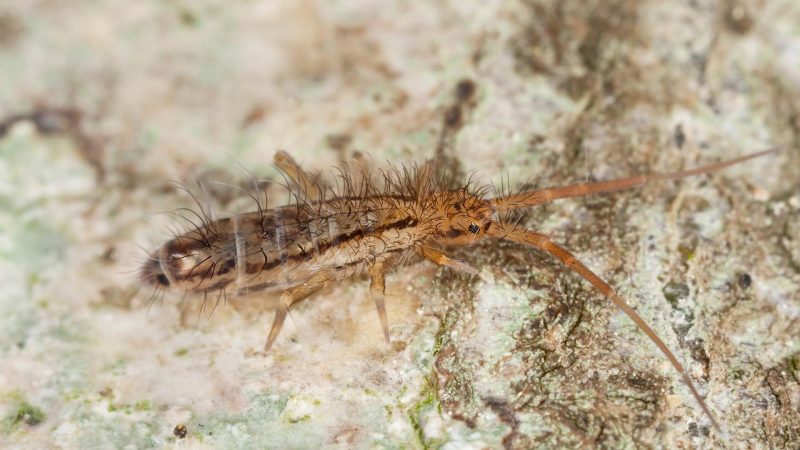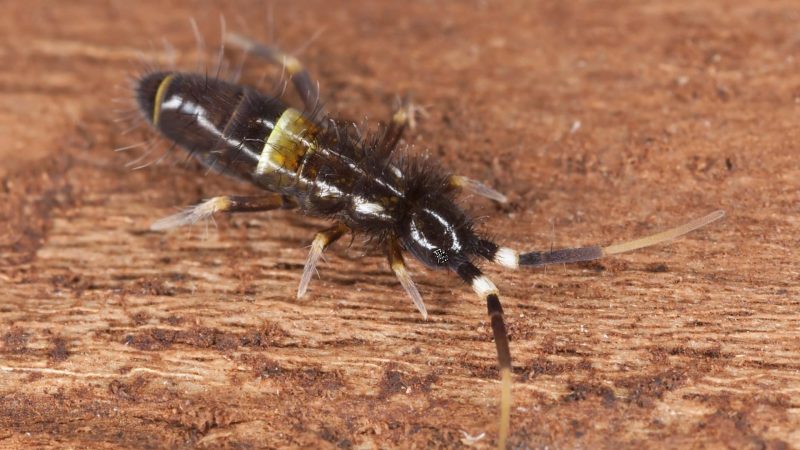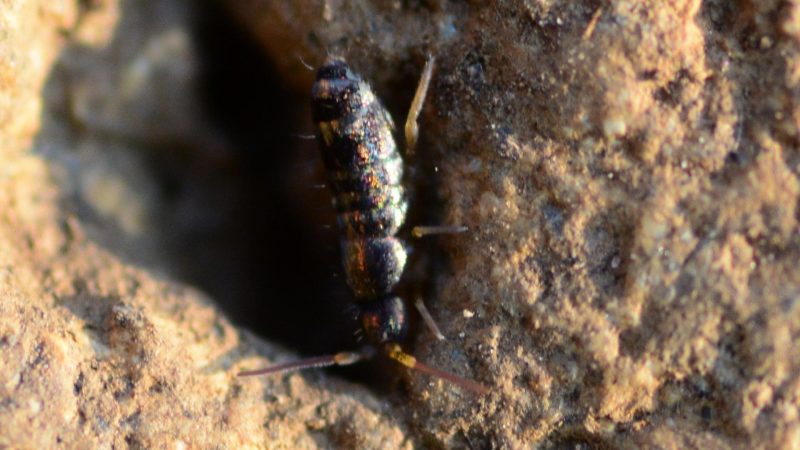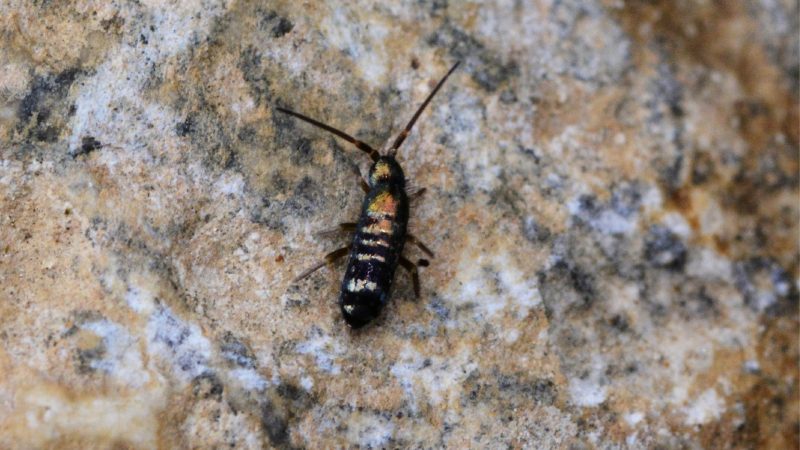Springtails are tiny organisms that are mostly found in areas with high moisture and organic matter. Although they could be found in both outdoor and indoor environments, springtails are not considered pests and are generally harmless to humans and pets.
Why do you have springtails in your bathroom? Springtails migrate from their outdoor habitat to indoor spaces during dry conditions. These organisms are known to thrive in areas with high moisture. Thus, when outdoor conditions are unfavorable, they would move indoors, particularly in dark and damp areas around the house, including bathrooms.
The presence of springtails usually indicates high moisture, which could also attract other insects and household pests. Thus, in this article, we will provide information on the biology and habits of springtails as well as ways to prevent infestation.
What Are Springtails?

Springtails are insects of the class Collembola. They are small organisms with body lengths of less than an inch (0.008 to 0.39 inches). The name springtail comes from its main distinguishing feature: a forked tail located at the end of its abdomen that serves as a jumping organ. A springtail’s forked tail called a furculum enables them to jump at a distance several times their body in only a split second.
Outdoors, springtails are seen in moist areas such as in leaf litters, lawns, gardens, under stones and wood, and mud puddles. But when outdoor conditions are not favorable, they would invade indoor spaces such as kitchen sinks, bathrooms, basements, and soils of indoor potted plants.
In general, springtails are short-lived, and only a few survive as adults for more than a year or two.
What Do Springtails Look Like?

Springtails are small and wingless organisms. They are regarded as one of the tiniest insects (only about an inch long) on Earth. Their bodies have scales that vary in color from brown, grey, or black, depending on the species.
Attached to the fourth segment of their abdomen is a forked tail. This allows them to jump at great distances relative to their body size, particularly when disturbed or trying to escape their predators. Because of this jumping behavior, springtails are often mistaken for fleas.
What Do Springtails Eat?

The majority of springtails feed on bacteria, fungal hyphae, and decaying plant material. However, a few would directly feed on plant material, which could lead to economic losses due to the reduction in yield. On the other hand, other species of springtails consume nematodes, other soft-bodied animals found in the soil, and even other springtails.
The feeding activities of springtails play an important role in stimulating and suppressing microbial symbionts around plant roots. As decomposers, they also aid in the breakdown of organic matter, thereby returning nutrients to the soil.
Are Springtails Harmful?

Springtails are generally harmless to humans. They are not known to bite humans and pets and are neither known to be disease vectors. However, springtails are highly reproductive and could be a nuisance once they occur in huge numbers.
What Attracts Springtails to the Bathroom?

Springtails generally thrive outdoors, specifically in areas with high amounts of organic matter. However, during dry outdoor conditions, springtails tend to migrate indoors in search of areas with high moisture. Migration usually occurs during early to mid-summer.
Particular areas around the house where springtails can be found include soil of indoor potted plants, basements, kitchen sinks, and bathrooms. These spaces, being dark and damp, provide a suitable environment for these organisms.
How Do Springtails Get Into the Bathroom?
Springtails are tiny organisms. Thus, they could easily invade moist areas such as bathrooms of houses and buildings through gaps or cracks in bathroom floors. They could also gain entry through cracks and crevices and gaps around doors and windows.
Springtails often occur in large numbers. Thus, once observed, it is highly likely that a huge population is present in your household. Usually, springtails would congregate in areas with potential plumbing leaks.
What Causes Springtail Infestation?
Springtails are prone to desiccation. Thus, when outdoor conditions are hot and dry (usually during early or mid-summer), they will always move to areas with high moisture. In addition, springtails also migrate once they’ve become crowded. These conditions force springtails to invade households and buildings in search of dark and humid areas.
However, since springtails are short-lived organisms, their indoor presence would just be temporary. Similarly, their numbers would fluctuate depending on indoor environmental conditions (temperature and moisture), as well as the availability of food.
How to Get Rid of Springtails in the Bathroom?
In general, springtails are harmless and would not cause any type of damage in your household. However, when they occur in huge numbers, they often become nuisance pests.
When found in the bathroom, the first thing that should be done is to dry the infected area. Without enough moisture, springtails would dry out and eventually die. Afterward, springtails could easily be removed either by sweeping or by using a vacuum.
Springtails are known to be resistant to most pesticides. Thus, the use of chemical controls is not recommended when addressing springtail infestation.
How to Prevent Springtails From Coming Back to Your Bathroom?
The presence of a small population of springtails in bathrooms and other humid areas around the house usually does not warrant control. However, to prevent larger infestation, several measures should be done both outdoors and indoors, such as:
Outdoors
- Remove potential breeding sites such as excess mulch and leaf litters.
- Avoid overwatering landscape plants, turfgrass, and vegetable gardens.
Indoors
- Always check for any moisture problems around the house. Check for plumbing or other water leaks.
- Prevent potential entry by repairing broken screens and sealing cracks and crevices, as well as gaps around windows and doors.
- Install fine-mesh screens in areas where springtails could enter.
- Use fans or dehumidifiers to increase or improve ventilation.
- Prevent condensation by insulating water pipes.
- Avoid overwatering houseplants. Watering less frequently and allowing the soil to dry down before watering again would prevent the presence of springtails.
Related: Springtail Control: How To Get Rid of Springtails?
Summary
Springtails naturally occur outdoors; however, dry conditions would force these organisms to move indoors, particularly in moist areas or areas near water sources such as basements, kitchen sinks, the soil of indoor plants, and bathrooms. Although they could occur in large numbers, they are generally harmless to humans and pets.
Problems occur once springtails become nuisance pests. In such cases, the main approach is to allow infested areas to dry, as lack of sufficient moisture would not support the presence of springtails.
List of Source
Cranshaw, W. (2012). Springtails. Colorado State University.
Merchant, M., Muegge, M. (2004). Springtails. Texas A&M AgriLife Extension.
Perry, E. (2007). Springtails. University of California Agriculture & Natural Resources.
Houseman, R. (2014). Springtails. University of Missouri Extension.
- How to Get Rid of Copperheads | Practical Guide - August 27, 2023
- How to Get Rid of Corn Snakes | What Makes Them Aggressive? - August 27, 2023
- How to Get Rid of Alligators | Safety Measures and Removal Methods - July 16, 2023
